
Using blockchain in supply chains has emerged as the desired technology to build resilient supply chains. Blockchain—the digital ledger-keeping ecosystem initially developed for cryptocurrency networks—can be utilised by supply chain stakeholders to create a complete, transparent, resilient, recorded chronology of all information, financial, and inventory flows supply chain transactions.
Naturally, there are initial prerequisites for using blockchain in supply chain management:
- Adopting a new consensus protocol, a 'supply chain standard.'
- Introduce a global online identity system to make it easier to trust other parties.
But if implemented thoughtfully, blockchain could pay significant dividends for companies in various industries, including developing resilient supply chains.
What is a blockchain?
Simply put, a blockchain is a decentralised ledger—a series of records known as 'blocks' stored in a chronologically time-stamped order. Technically, blockchain is a combination of cryptography and peer-to-peer technologies. To put it more simply, a blockchain is a notary system of a network of connected computers with a ledger that keeps track of transactions.
The ledger is updated over a peer-to-peer network as more data flows through the network, creating connecting blocks of information, the blockchain. Each block in the network is linked with the cryptographic hash of the immediately preceding block leading to a long connected chain of data from the genesis to the current state block.
To update a ledger, the nodes in the network undergo a predefined consensus protocol to validate the data before it is added to the block.
The cryptographic keys help authorise two digital signatures: one whose accessibility is open to the network participants and another that the correct data owner can only access.
Instead of a transaction moderated by intermediaries, a decentralised peer-to-peer network, via consensus protocols, conducts and verifies transactions.
In other words, this peer-to-peer network represents a pool of entities with custodial power to reach a consensus over the information updated to the ledger. Finally, the digital ledger is a shared or public spreadsheet where transaction history is recorded and stored.
This means that provided you are a user of the Blockchain network, you are inclined to access the data irrespective of geography or time. In this case, every participant of the blockchain technology will be given the exact copy of the distributed ledger.
That's to say: if data gets corrupted or altered during a transaction process, other copyholders are immediately informed, and they consequently find a way to weed out the problem.
How blockchain in supply chains drives value for business
Blockchain enables easier connectivity whilst increasing supply chain transparency, lowering costs and thus reducing risks across the supply chain. Blockchain supply chain innovations can provide the following advantages:
- Improve traceability of assets and parties within supply chains.
- Lower losses from counterfeit products and trading.
- Improve visibility with outsourced contract manufacturing.
- Boost connectivity between every supply chain stakeholder.
- Help ensures compliance standards are met, reducing a public relations risk from supply chain party malpractice.
- Reduce administrative costs.
- Strengthen company reputation by providing greater transparency of materials used in products. For example, consumers want sustainable supply chain products and processes.
- Increase credibility and public trust in data sharing.
Blockchain technology enables more transparent and accurate end-to-end tracking with supply chains. Organisations can digitise physical assets (creating a digital twin) and construct a decentralised, immutable record of every transaction, making it possible to track products through each stage of the supply chain process, from production to delivery to final consumption by consumers.
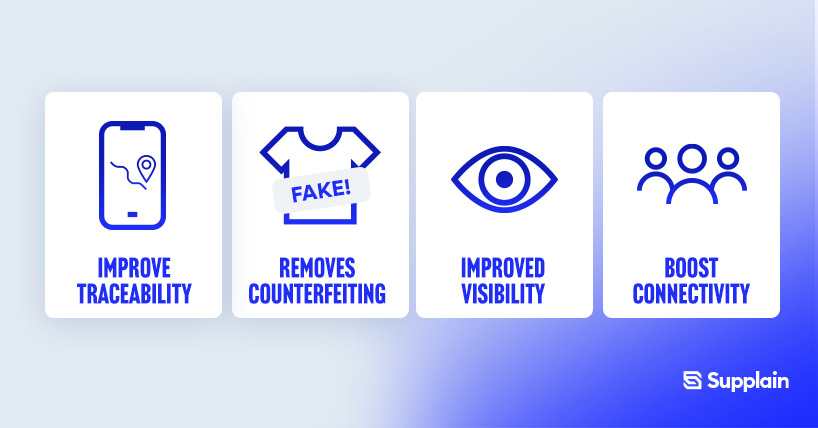
Increasing supply chain transparency boosts a corporate profile of a business whilst consumers can choose where they get their products from and who delivers them.
For example, this transparency not only reduces fraud of high-value items like drugs, gems or high-luxury goods but ensures that consumers know whether these products are produced sustainably and not ecologically unfriendly or with child labour, as often happens within the diamond mining industry.
Supply chain stakeholders who adopt blockchain applications help the public and companies understand how ingredients and finished goods are passed through each subcontractor, reduce profit losses from counterfeit trading, and increase credibility.
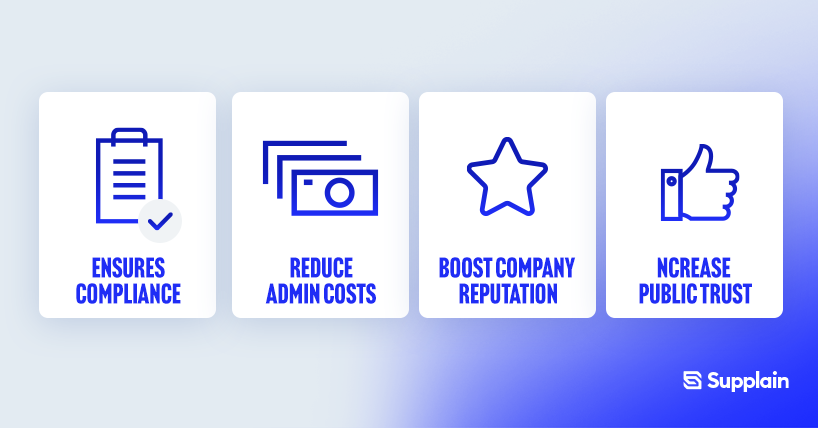
Furthermore, it is not only transparency and sustainability; businesses can increase control over outsourced contract manufacturing. Blockchain technology provides every party with relevant access to the same data, potentially reducing communication or transfer data errors and mitigating supply chain risks associated with malpractice. Supply chain stakeholders can spend less time validating data, and companies can spend more on delivering goods and services—improving quality, and reducing cost.
Lastly, blockchain applications streamline administrative processes and decrease costs by enabling supply chain data to be audited. Manual auditing of data and information is not only inefficient (it can take weeks), it is prone to inaccuracies which damage credibility for credit and compliance purposes.
Potential concerns over using blockchain in supply chains - privacy

When adopting blockchain in supply chains, a business must decide on the type of blockchain it would need to build.
The first thing for us to understand is that the supply chain companies do not want to provide open access for everything because they do not want to reveal their sensitive and proprietary data, including prices, orders, margins, demand and capacity, especially not to unknown parties.
At the same time, we know that most public blockchains, such as Bitcoin and Ethereum, are fully open systems with almost no privacy, whilst also being expensive and often too slow for enterprise use due to their inefficient consensus mechanisms and attempt to be suitable for any use case, and not specialising.
Because of this, most supply chain solutions until now have been built using private or consortium blockchains, such as Hyperledger, that enable the creation of more private ecosystems with more efficient or no consensus mechanisms where all involved parties are known and trusted.
This type of solution works perfectly between a limited number of participants who all have been doing business with each other for a long time. However, private or consortium blockchains cannot be used for building global ecosystems.
- Private and consortium blockchains only let entities use applications built specifically for the private system, thus limiting the innovation and what companies could do with them.
- Because of this, onboarding private and consortium blockchains are more expensive and time-consuming, as companies need to change all their systems or import all data.
- Also, private and consortium blockchains have central governance and are thus being controlled by other parties that may decide to change the rules only by themselves, which is generally something enterprises try to avoid for fear of vendor lock-in.
- Finally, private blockchains are even less scalable as they need to be run by a more limited number of nodes.
Sometimes, solution builders try to use a mix of private and public blockchains, e.g. Hyperledger and Ethereum, to get the best of both worlds. However, as none of those blockchains is explicitly built for supply chain use cases and the companies behind those solutions still try to keep central control, these solutions are generally not scalable enough.
So, although using private or consortium blockchains to build supply chain solutions initially seems like a great idea due to the simple path for privacy, the existing blockchains are still unsuitable for enterprise and supply chain use cases.
Fortunately, the first privacy-preserving open networks, also known as a hybrid of public and private blockchains, are already being created.
The idea behind such blockchains is to have a main public network that provides shared security, consensus and transaction settlements, as well as private sub-networks that are mainly used to exchange data and documents between companies, which can be both private and permissioned.
Such blockchains, e.g. Supplain, enable anyone to join the network and connect or build solutions that communicate with the protocol whilst providing tools to keep the information private and permissioned when needed. Therefore getting the best of both worlds.
Supplain's approach theoretically permits public or private verification of each proposed block. For example, in shipping and logistics companies, only a few known parties in the supply chain—including hauliers, ports, customs, and shipping lines—will be responsible for validating each block, ensuring that nobody has access to every piece of data, but only to what they need to do to validate the block before another party along the supply chain receives an asset.
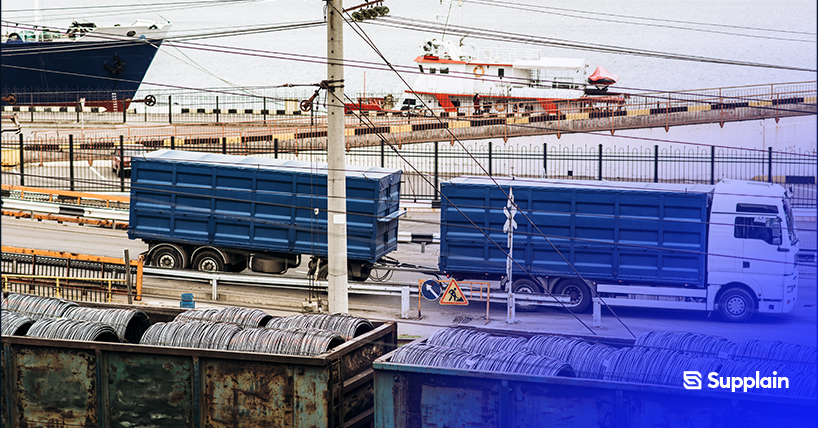
Blockchain and supply chains - the future?
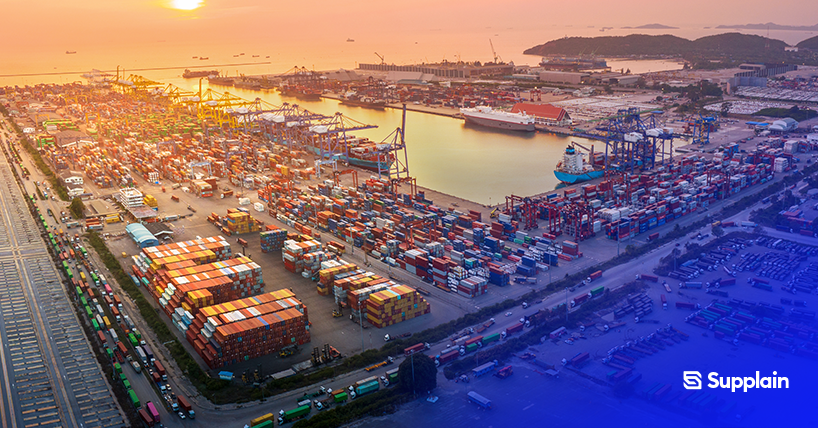
As blockchain technology gains momentum, companies should consider observing other industry leaders who have begun experimenting with blockchain. Blockchain technology benefits significantly from the network effect; once several players begin to adopt the technology, it is easier for others to get behind.
For example, several initial companies will use the new supply chain messaging protocol - Supplain - before others integrate.
Blockchain technology makes it possible to introduce more trust, transparency, sustainability and traceability to supply chains, whether participants are unknown or trusted. Supply chains are complex, multi-tiered, involve several parties, and operate in a regulated environment that demands more scrutinised traceability.
Today, most supply chain parties use siloed databases containing data with only limited connectivity and traceability, which leverage existing technologies that they deem better suited to their high-volume transactions.
Introducing blockchain technology within supply chains opens us to hundreds of new potential innovations that rely on transparent, traceable, and trusted supply chain data. Undoubtedly, IT innovation companies will be ready to support supply chain companies with this transition.
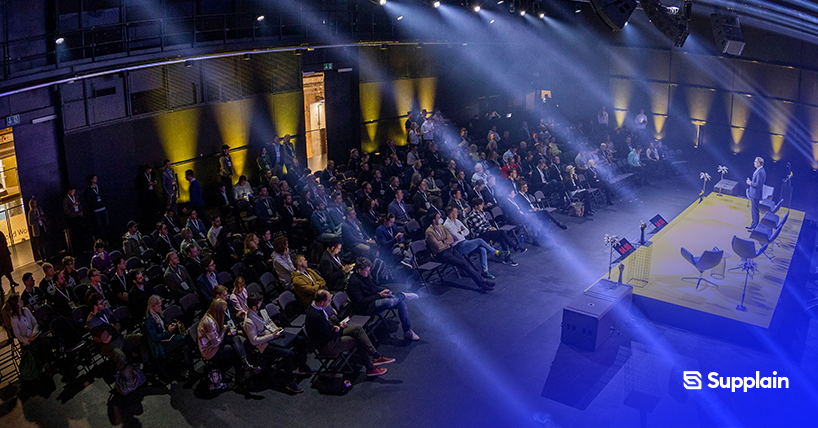
![Here are the best NFT games [Updated List]](https://strapi.supplain.io/uploads/What_is_so_special_about_a_World_of_Freight_NFT_and_what_will_move_the_project_forward_b89946b520.png)
